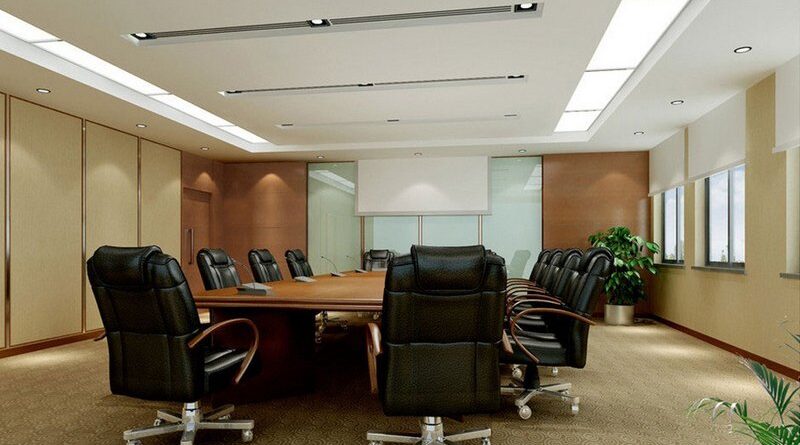Creating Dynamic Teams with Modular Office Solutions
In today’s rapidly evolving business landscape, the traditional office setup is undergoing a significant transformation. As organizations strive to foster innovation, adaptability, and seamless collaboration among their teams, the concept of modular office solutions has emerged as a game-changer. In this era of remote work and dynamic team structures, creating a collaborative environment that supports the ever-changing needs of businesses is crucial. This article explores the concept of Collaboration Central – a workplace philosophy that harnesses the power of modular office solutions to facilitate dynamic teamwork and enhance productivity.
Understanding Modular Office Solutions
Modular office solutions are a flexible and scalable approach to workspace design. These solutions break away from the rigid constraints of traditional office layouts and embrace a more adaptive model. The key components of modular office solutions include movable furniture, flexible partitions, and technology integration that allows teams to customize their workspaces based on their specific requirements.
Benefits of Modular Office Solutions
- Adaptability and Scalability: One of the primary advantages of modular office solutions is their adaptability. As teams grow or projects change, the workspace can easily be reconfigured to accommodate new requirements. This scalability ensures that the office environment remains aligned with the organization’s evolving needs.
- Enhanced Collaboration: Collaboration Central revolves around the idea of creating a hub where collaboration is not just encouraged but seamlessly integrated into the workspace. Modular office solutions facilitate this by providing an open and agile environment that promotes spontaneous interactions and idea-sharing among team members.
- Improved Productivity: A well-designed modular office fosters a conducive atmosphere for focused work. With the ability to customize individual workstations, employees can create spaces that enhance their productivity. Ergonomically designed furniture and technology integration contribute to an efficient and comfortable work environment.
- Cost-Effective Design: Traditional office layouts often involve substantial costs related to fixed structures and permanent fixtures. Modular office solutions, on the other hand, are cost-effective as they allow for efficient space utilization and can adapt to changing needs without major renovations.
Implementing Collaboration Central
- Strategic Space Planning: The first step in creating Collaboration Central is thoughtful space planning. Understand the nature of your team’s work and design the office layout accordingly. Consider collaborative zones, private workspaces, and communal areas to cater to diverse working styles.
- Technology Integration: In a world driven by digital innovation, integrating technology seamlessly into the workspace is essential. Modular office solutions should incorporate smart tools, communication platforms, and audio-visual equipment to enhance connectivity and collaboration among team members, whether they are in the office or working remotely.
- Flexibility in Furnishings: Adjustable desks, movable partitions, and collaborative seating options provide flexibility, allowing teams to create workspaces tailored to their specific needs.
- Incorporating Nature: Creating a collaborative and dynamic workspace isn’t just about furniture and technology. Nature has a profound impact on employee well-being and creativity. Integrate elements like natural light, indoor plants, and open views to the outdoors to create a refreshing and inspiring environment.
Case Studies: Successful Implementation of Collaboration Central
- Google’s Agile Workspace: Google’s offices are renowned for their innovative and collaborative design. The tech giant embraces a modular approach with movable furniture, open spaces, and a variety of collaboration zones. This design philosophy has contributed to Google’s reputation as a hub of creativity and innovation.
- Steelcase’s Flex Collection: Steelcase, a leading office furniture manufacturer, offers the Flex Collection, a range of modular furniture designed to adapt to changing work needs. This collection provides organizations with the tools to create a dynamic and collaborative workspace, enhancing employee engagement and productivity.
Challenges and Considerations
While Collaboration Central and modular office solutions offer numerous benefits, there are challenges and considerations that organizations need to address:
- Cultural Shift: Transitioning to a more collaborative and modular workspace requires a cultural shift within the organization. Employees may need time to adapt to the new environment and embrace the principles of flexibility and collaboration.
- Privacy Concerns: While collaboration is essential, employees also value their privacy. Balancing open collaborative spaces with private work areas is crucial to address individual needs and preferences.
- Technology Infrastructure: A seamless collaborative environment heavily relies on robust technology infrastructure. Organizations must invest in reliable connectivity, communication tools, and collaborative platforms to ensure teams can effectively collaborate, whether they are in the office or working remotely.
Conclusion
Collaboration Central, powered by modular office solutions, represents a forward-thinking approach to creating dynamic and innovative work environments. By prioritizing adaptability, collaboration, and employee well-being, organizations can position themselves for success in an ever-changing business landscape. As the concept continues to evolve, embracing Collaboration Central becomes not just a choice but a strategic imperative for businesses looking to thrive in the future of work.

